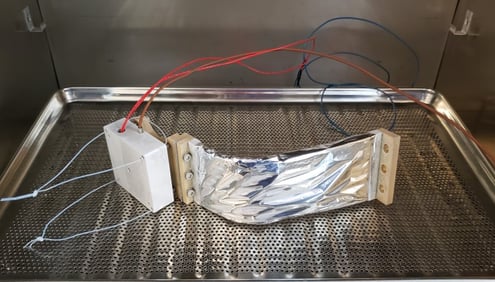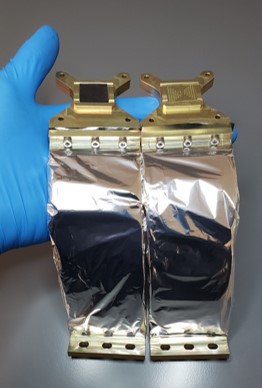
TAI Delivers Graphite Fiber Thermal Straps (GFTS) to INFN for NASA's IXPE Mission
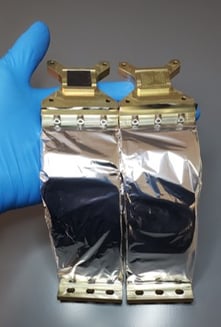 I am happy to announce that TAI recently delivered several spaceflight model (FM) Graphite Fiber Thermal Straps (GFTS®) to Italy's National Institute for Nuclear Physics (INFN), to be incorporated on instruments destined for NASA's Imaging X-ray Polarimetry Explorer (IXPE) mission, scheduled for launch in 2021.
I am happy to announce that TAI recently delivered several spaceflight model (FM) Graphite Fiber Thermal Straps (GFTS®) to Italy's National Institute for Nuclear Physics (INFN), to be incorporated on instruments destined for NASA's Imaging X-ray Polarimetry Explorer (IXPE) mission, scheduled for launch in 2021.
This was a very unique GFTS® program, requiring some of the longest graphite fiber straps we have ever designed, complete with a first-of-it's-kind Thermoelectric Cooler Adapter/Hybrid End Fitting design on the heat source fitting of each of the 6 straps.
INFN needed a complete protoflight level program, requiring thermal conductance, stiffness, thermal cycling, and post-test thermal testing (see pictures below):
|
|
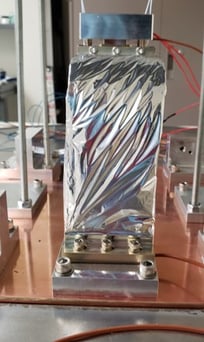 |
Pictured: GFTS® Installed in Test Chamber 1, Post Thermal Conductance Testing (November 2018)
|
Thermal Cycling (November 2018) |
Stiffness Test (November 2018) |
NASA's IXPE Mission
The Imaging X-ray Polarimetry Explorer (IXPE) exploits the polarization state of light from astrophysical sources to provide insight into our understanding of X-ray production in objects such as neutron stars and pulsar wind nebulae, as well as stellar and supermassive black holes. Technical and science objectives include:
- improving polarization sensitivity by two orders of magnitude over the X-ray polarimeter aboard the Orbiting Solar Observatory OSO-8(scientists see HEASARC: Observatories),
- providing simultaneous spectral, spatial, and temporal measurements,
- determining the geometry and the emission mechanism of Active Galactic Nuclei and microquasars,
- finding the magnetic field configuration in magnetars and determining the magnitude of the field,
- finding the mechanism for X ray production in pulsars (both isolated and accreting) and the geometry,
- determining how particles are accelerated in Pulsar Wind Nebulae.
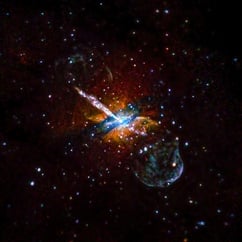 This image from the Chandra X-ray Observatory, shows a jet emanating from the central, supermassive black hole of Centaurus A. The colors in this image represent the energy of the detected X rays, with red for low, green for middle, and blue representing high-energy X rays. Astrophysical objects like this one, are good candidates for observations of polarization that will give us information about the object's magnetic field and its configuration. For more information on this image, you may visit the Chandra X-ray Observatory's website.
This image from the Chandra X-ray Observatory, shows a jet emanating from the central, supermassive black hole of Centaurus A. The colors in this image represent the energy of the detected X rays, with red for low, green for middle, and blue representing high-energy X rays. Astrophysical objects like this one, are good candidates for observations of polarization that will give us information about the object's magnetic field and its configuration. For more information on this image, you may visit the Chandra X-ray Observatory's website.
Content Credit: NASA
We are thrilled that our GFTS® products are a part of spaceflight history once again, and would like to thank NASA and INFN for the opportunity. Here's to 2021!

